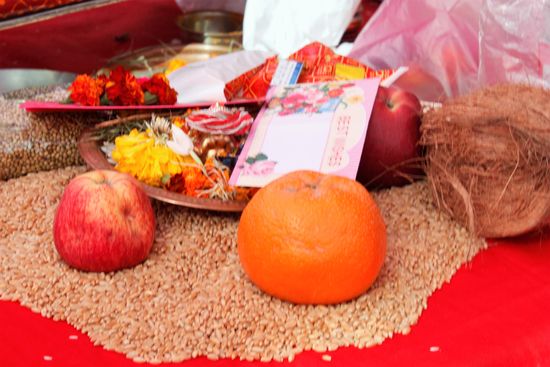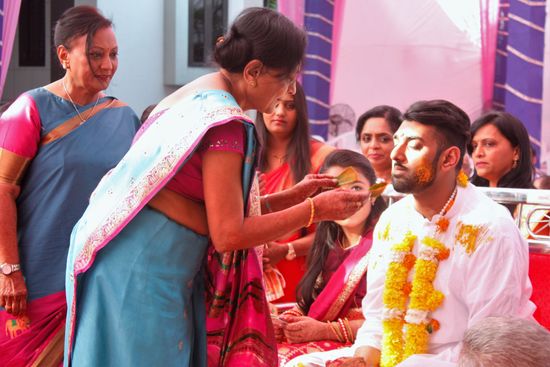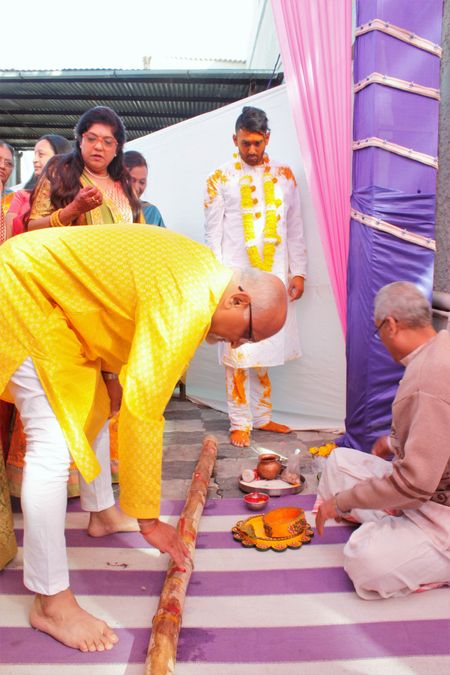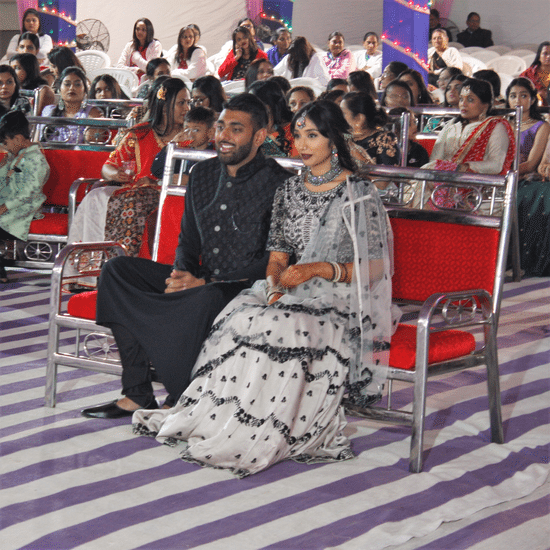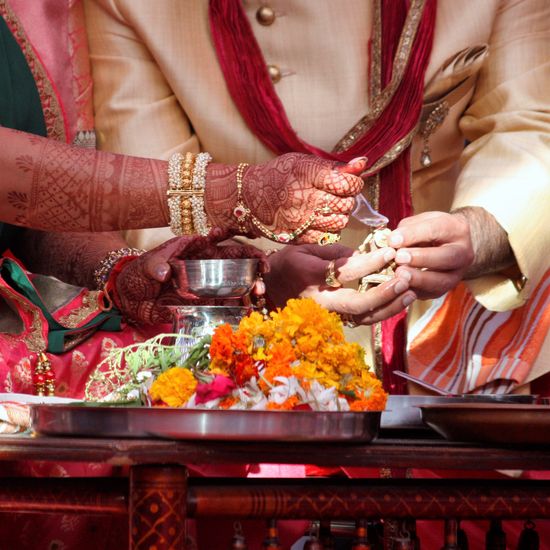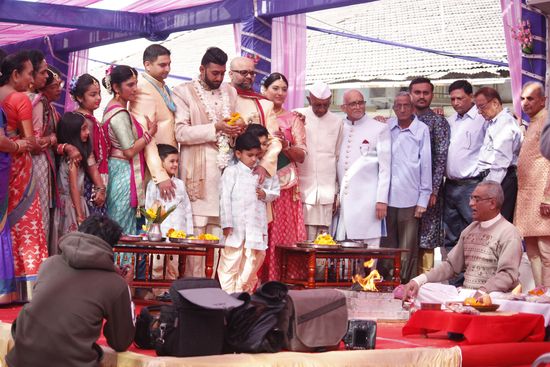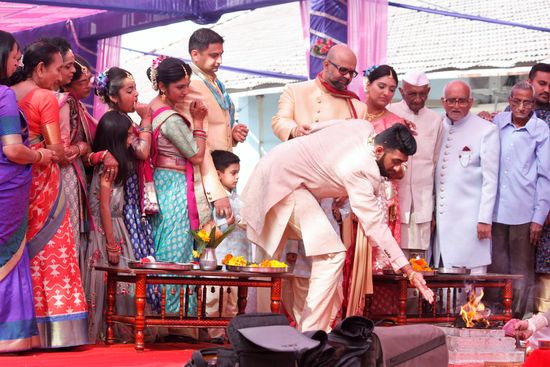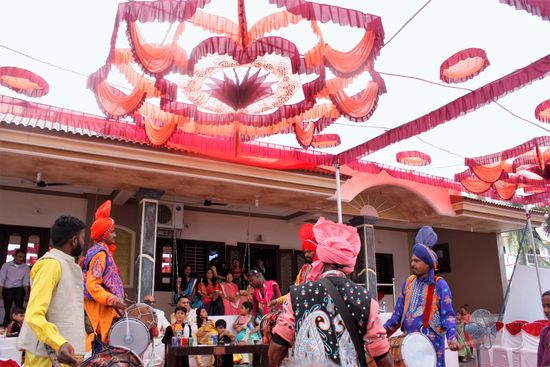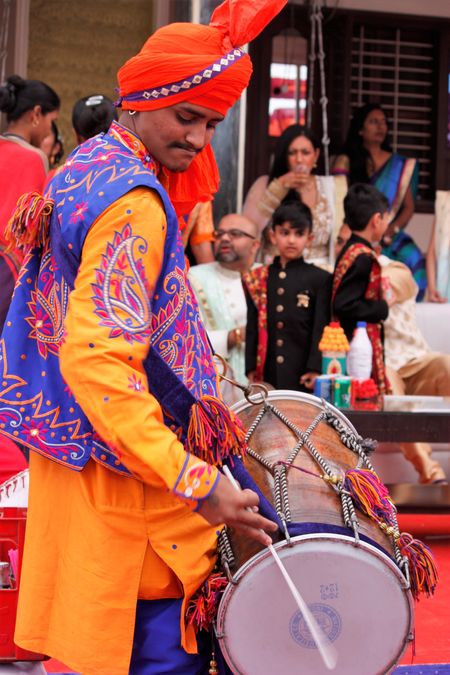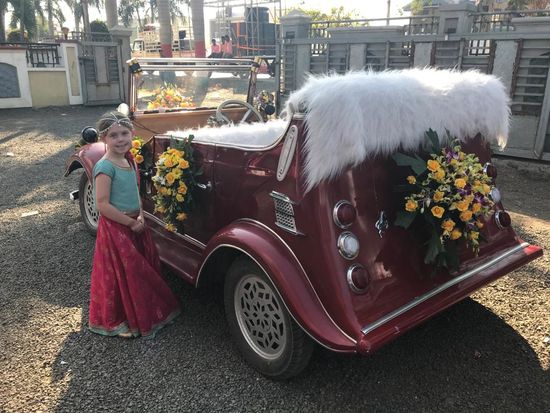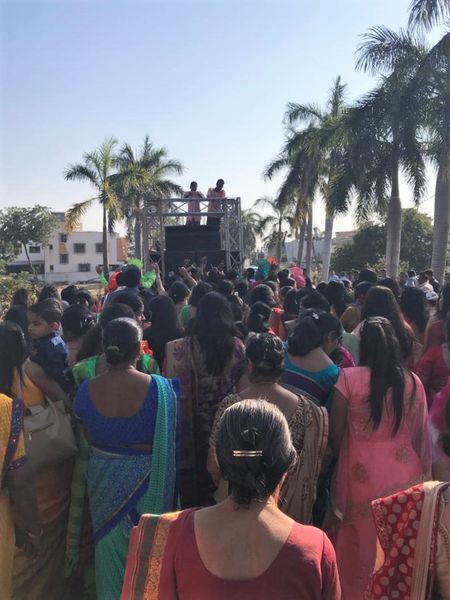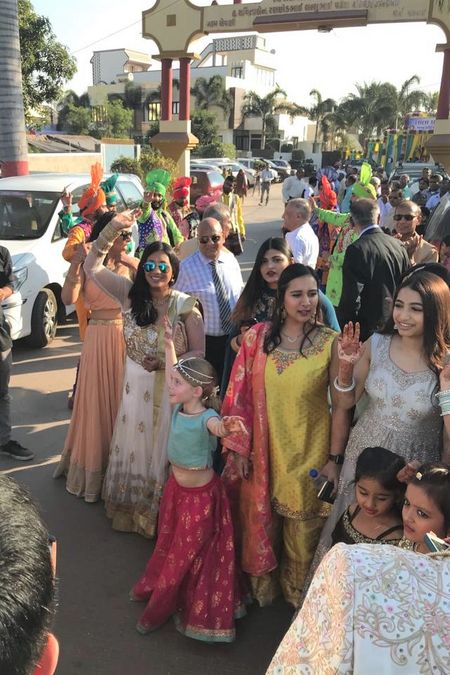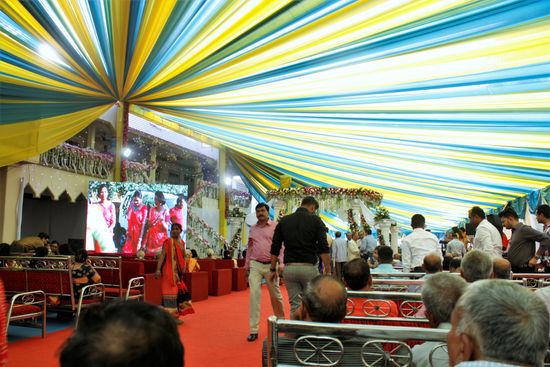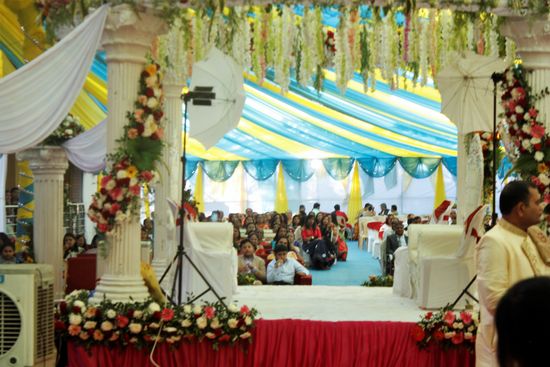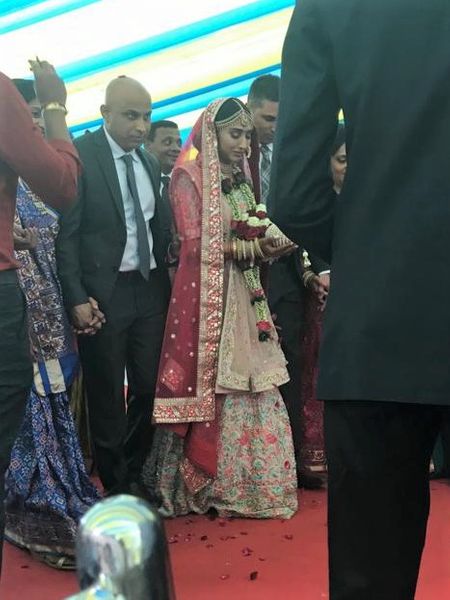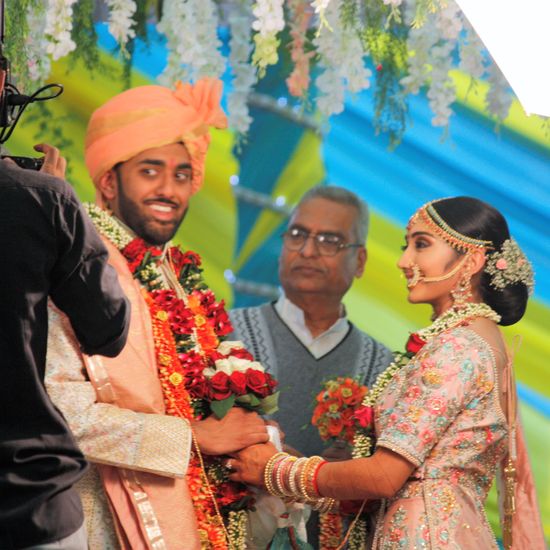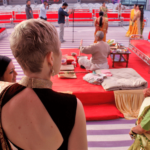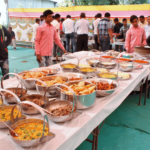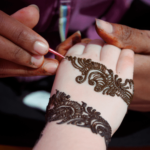Hello Readers! This is the 5th and final installment of my Gujarat Wedding series. Today’s post will be on the various ceremonies that we got to witness as guests. I’m gonna be honest, I might get a lot of this wrong. It wasn’t super clear what was going on during each of the ceremonies but I’ve tried to piece together the pictures I have with information I found on the web to give you a broader understanding of the rituals that take place both before the wedding and on the actual wedding day.
In this wedding, the bride and groom each did their own separate pre-wedding rituals with their friends and family. That’s why you’ll see very few pictures of the bride in any of my photos. The ceremonies we participated in lasted 3 days. As I mentioned in my clothing post, each was a formal affair that required a different outfit.
Here’s a rundown of what we got to witness:
Day 1 Morning:
Ganesh Sthapana:Â During this puja ceremony the family invites Lord Ganesh to be present at the wedding. His presence is believed to ensure the smooth running of the ceremonies and to remove any obstacles, ensuring a good start for the couple.
Pithi: A ritual during which friends and family rub turmeric on the groom’s body. It is believed to make the groom glow and look his best on the wedding day.
Mandap Muhurat: The ‘pujari’ (puja leader) performs a brief puja at the shrine then puts red dot on the foreheads of four men from the family. He goes on to give them a small bamboo stick with ‘nada chari’ (red thread) wrapped around it and Manek Sthumbh (the pillar of gem). The men link their hands and carry this to the site of the ‘Mandap (the canopy under which the wedding will be held)’ and embed it into the earth. This stick is symbolic of one of the poles of the ‘Mandap’, which will support the wedding canopy. Since we were not at the actual site of the wedding, we chose a ceremonial place adjacent to the family home instead.
Day 1 Evening:
Sangeet Sandhya:Â This is a song and dance ceremony during which the families get to know one another. The Garba dance was done for many hours at this event. It is a circular dance with a simple, repetitive pattern that all can do. This was my first time seeing the bride.
Day 2 Morning:
Grah Shantak:Â Grah Shantak is a pre wedding ritual where a puja is performed to invite Lord Ganesha into the couple’s home to remove all obstacles and bring them peace, health and prosperity.
Day 3 Morning:
The wedding took place on Day 3. It was to be held in the bride’s village at her house.
The Jaan: The Jaan is the welcoming of the groom by the bride’s family when he arrives at the bride’s village. There was an initial reception hall where this took place. There was lots of drumming, dancing and gifts to welcome the groom’s family.
Next came the Baraat.
Baraat: During the baraat the groom travels to the wedding ceremony with his family and friends. This procession is known as the baraat and the people with the groom are called the baraatis. Traditionally, the groom arrived seated on a white horse or in a decorated horse and carriage. A rented car is an accepted modern substitute. The procession is often accompanied by a band and lively music, with the baraatis dancing along the way.
Our groom opted to travel with his two sisters in an antique car. It took about an hour to go from the initial reception hall in her village to the site of the wedding at her house. That Baraatis were led by a truck with a giant sound system pumping out Bollywood favorites. The groom rode in the car at the end of the procession. Lots of dancing was done! Nia LOVED this part.
The Wedding:
The wedding was held in a tent that looked quite similar to the one I showed you in the groom’s village. Here is a picture of it.
In the center of the tent was a Mandat (a make-shift temple) in which the ceremonies would be performed.
Jaimala: The first ritual of the actual wedding ceremony during which the couple exchanges fresh garlands of flowers.
Antarpaat: A ritual during which the groom is seated on the Mandap. A curtain is lifted so that he cannot see and the bride is escorted to her chair. Over the course of the ritual the curtain is lowered and the bride and groom are allowed to see each other.
Kanyadaan, hasta milap and varmala: Kanyadaan is the moment when the bride’s father gives his daughter’s hand in the hands of the groom. After this, the bride’s saree is tied to the groom’s shawl in a ritual known as the hasta milap. After that, a cord is tied around the couple’s necks by the elders in the family to ward off evil, which is known as varmala.
Madhuparka/panchamrut: During this ritual a member of the bride’s family washes the groom’s feet, while he is offered a drink of milk and honey.
Mangalpheras and saptapadi:Â Unlike most Hindu weddings, Gujarati weddings have 4 pheras rather than 7. The priest chants the mantras, while the couple takes rounds around the sacred fire. They take seven steps together that are known as the saptapadi. The married couple then seeks the blessings of all their elders.
We unfortunately did not get many good pictures because there were a lot of professional photographers and other guests in the way. But hopefully the descriptions give you some idea of what was going on. We were truly blessed to attend these festivities and I hope you feel like you were a part of things too. Thank you for following our adventures. xoxo
Sources:
https://www.bollywoodshaadis.com/articles/sacred-rituals-of-a-gujarati-wedding-1784 https://www.tourmyindia.com/wedding/gujarati-pre-and-post-wedding-ceremonies.html https://www.jeevansathi.com/blog/a-sneak-peek-into-the-pre-wedding-rituals-of-gujarati-community https://oureverydaylife.com/what-is-the-jaan-arrival-in-an-indian-wedding-12295061.html http://nitzamit.blogspot.com/2010/12/1-mandap-muhurat.html
